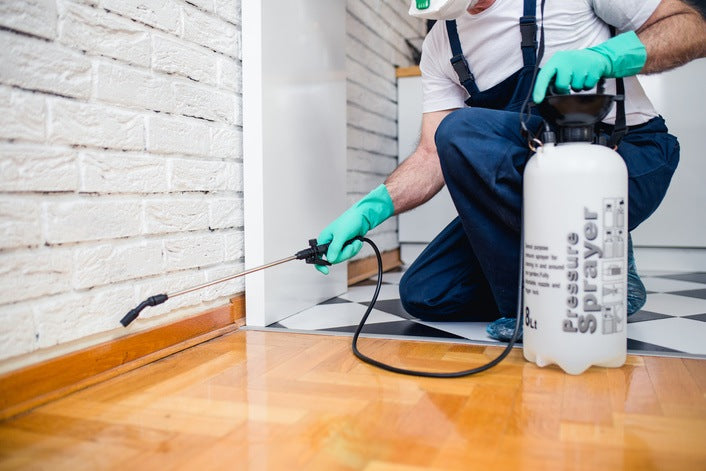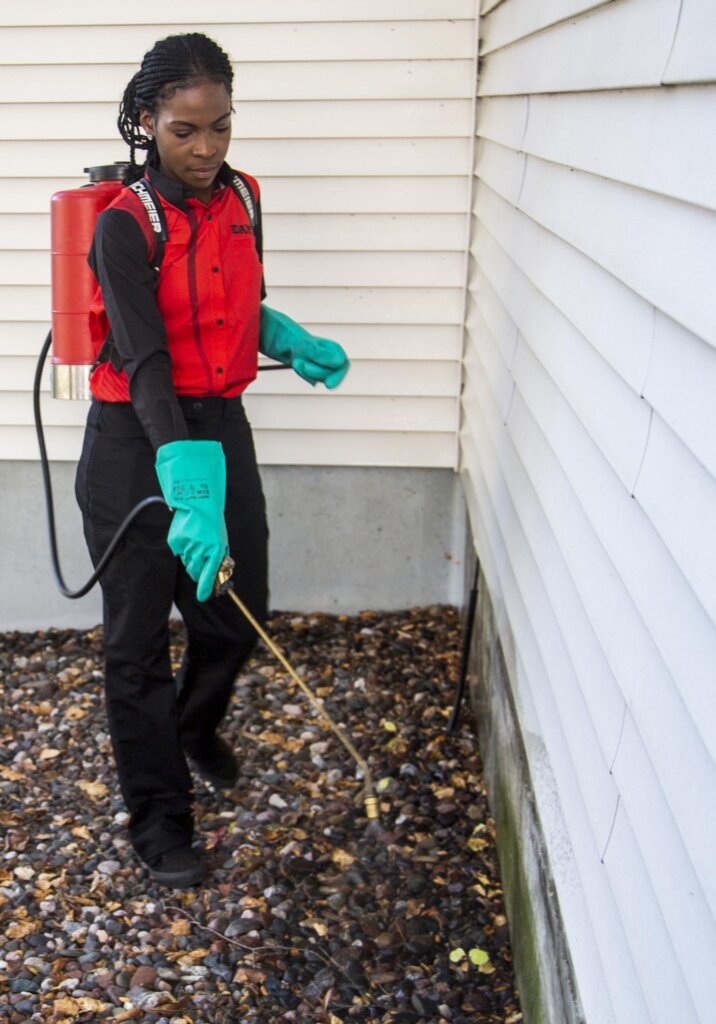Exploring Infestation and Treatment Methods on the planet of Insect Control
The landscape of bug control encompasses a myriad of difficulties, especially as problems of common household parasites continue to advance. By incorporating precautionary procedures with innovative monitoring strategies, such as Integrated Insect Monitoring (IPM), property owners can better secure their environments.

Typical Home Pests
When it concerns handling our living spaces, comprehending usual home insects is vital. These bugs not just disrupt our convenience but can also pose health threats and damage home. One of the most common family pests consist of ants, roaches, rats, termites, and bed pests.
Ants, often seen foraging in cooking areas, can infect food and develop large nests. Rodents, including mice and rats, can cause structural damage and lug conditions like hantavirus and salmonella.
Recognizing the signs of these pests, such as droppings, nests, or attack marks, is important for early treatment (Pest Control Lockhart). Appropriate hygiene methods, securing access factors, and maintaining a clutter-free atmosphere work preventative measures. By determining these usual home parasites and recognizing their habits, homeowners can take proactive actions to mitigate problems, making certain a much healthier living environment
Recognizing Pest Infestations
Bug infestations can rise quickly, transforming a small inconvenience into a considerable problem if not resolved promptly. Usual variables adding to invasions consist of poor sanitation, architectural vulnerabilities, and seasonal modifications that drive parasites inside your home.
Determining the sort of bug is vital, as different species show diverse behaviors and reproductive rates. As an example, rats might develop nests in covert locations while bugs like cockroaches grow in damp atmospheres. Early detection often hinges on acknowledging indications such as droppings, munch marks, or uncommon noises, which can show a trouble prior to it comes to be extreme.
Environmental conditions likewise play a vital duty in parasite proliferation. Cozy, humid climates can promote the rapid growth of pest populations, while adjustments in landscape design or building can unintentionally produce conducive settings. For that reason, normal inspections and preventative procedures are paramount to reducing the danger of problems. An educated method to comprehending these dynamics prepares for effective insect monitoring approaches in the future.
Treatment Methods and Strategies
Reliable treatment approaches and strategies are necessary for alleviating bug problems and restoring a risk-free setting. A multifaceted technique is usually best, integrating chemical, biological, and mechanical strategies tailored to the particular insect and the seriousness of the problem.
Chemical therapies consist of the usage of insecticides and herbicides, which can efficiently eliminate bugs. Nevertheless, appropriate application and adherence to safety and security guidelines are vital to reduce threats to humans and non-target microorganisms. Integrated Pest Monitoring (IPM) motivates the wise use chemicals as a last option, depending rather on monitoring and limit levels to determine treatment demands.
Organic control methods include presenting all-natural predators or bloodsuckers to minimize pest populations. This technique is progressively prominent, specifically in farming setups, as it advertises environmental sustainability.
Mechanical methods, such as catches and obstacles, give prompt alleviation from pests without introducing chemicals. Choices consist of sticky catches for bugs or physical obstacles for rats.
Ultimately, the choice of therapy technique should take into consideration the particular bug, the atmosphere, and prospective effects on human wellness and communities. A balanced mix of these strategies can successfully take care of infestations while advertising long-term bug control remedies.
Preventative Measures for Homes
Proactively resolving insect problems before they intensify is important for preserving a healthy and balanced home environment (Pest Control Lockhart). Carrying out reliable precautionary procedures can substantially lower the chance of problems, eventually securing both your residential property and health

Appropriate landscaping also plays an essential duty in prevention. Keeping bushes and trees trimmed away from the home lowers the chances of insects finding their way inside. Additionally, make sure that drainage systems are working effectively to protect against standing water, which can attract insects and various other pests.
Finally, regular assessments are recommended. Routinely examining for signs of bug task permits very early intervention. By embracing these precautionary measures, homeowners can produce an environment that is less congenial to parasites, thereby enhancing their overall quality of life and lowering the need for considerable bug control interventions.
Commercial Bug Control Strategies
A comprehensive strategy to industrial bug control is vital for companies aiming to maintain a secure and hygienic environment. Reliable strategies involve a mix of normal assessments, staff member training, and the implementation of Integrated Bug Administration (IPM) practices.
Normal inspections visit the website allow early discovery of parasite activity, allowing for prompt intervention. Services should establish a regular timetable for these evaluations, concentrating on high-risk areas such as kitchen areas, storage spaces, and waste disposal sites. Worker training is equally crucial; team must be informed on the signs of pest problems and the significance of reporting them quickly.
Executing IPM practices helps reduce pest issues sustainably. This consists of habitat adjustment, such as sealing entry points and decreasing clutter, as well as employing natural deterrents prior to resorting to chemical therapies.

In addition, collaborating with a certified bug control copyright guarantees access to expert understanding and sophisticated therapy alternatives. This collaboration can lead to personalized pest control prepares customized to the details requirements of the company, minimizing threats and enhancing total efficacy. Ultimately, a proactive and educated technique promotes a pest-free environment, safeguarding both public health and service online reputation.
Verdict
To conclude, effective bug control requires an extensive understanding of usual house bugs and their actions, combined with targeted therapy methods. Executing preventive procedures together with treatment strategies such as Integrated Pest Monitoring and organic control enhances the ability to minimize problems. Routine examinations and a mix of chemical and mechanical solutions better contribute to keeping pest-free atmospheres. Ultimately, an all-round approach to pest administration is vital for securing living spaces from undesirable intruders.